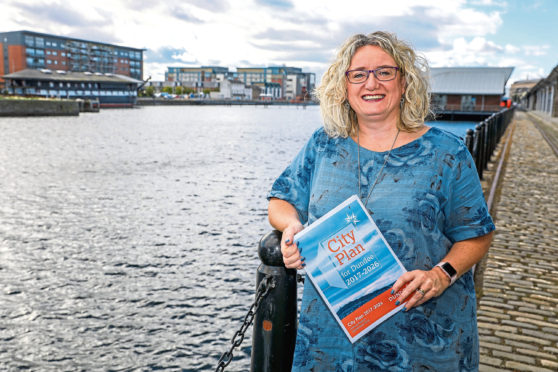Five months of growth have failed to get the economy back to pre-pandemic levels, with some Tayside businesses fearing they will not survive the pandemic impact.
Tayside-based economist, Dr Shona Dobbie of Angus Economics, told a webinar audience the latest survey of businesses in Dundee and Angus showed operating capacity had moved to 71%.
This is an improvement from the average of 54% recorded in the second quarter and 69% the third quarter.
The survey also found that business optimism is generally higher than three months ago but remains significantly lower than it was at this time last year.
Dr Dobbie said: “Our survey results show further signs of improvement in business activity across the Dundee and Angus area but the pace of change has lessened since the summer.
Over the last 3 months we have seen an encouraging uplift in both business revenue and orders and a very significant improvement in cashflow, which is critical for the health of any business.
“But, on the downside, the fact that profits remain subdued is feeding through to weaker investment and we have also seen a deterioration in employment conditions.
“Looking forward, however, it is encouraging to see that local businesses are generally expecting conditions and activity to continue to show some further signs of improvement.”
Of the local businesses who took part in the survey, organsied by hosted by Dundee and Angus Chamber of Commerce, 75% expect sales revenue to increase or remain constant over the next three months.
Looking to the next 12 months, 52% of firms now expect their business prospects to improve, but 6% remain concerned that they may not even survive.
Results
Alison Henderson, DACC chief executive said the latest survey results had delivered “a suite of really interesting results against a background of a year where we’ve witnessed a pandemic that none of us could have predicted would have such a long-term impact.”
She said: “We can see from our local business engagement work that there is an encouraging trend in business confidence here, with quarter-on-quarter improvements in our Business Sentiment Indicator.
“Exporters and many specific sectors are reporting positive signs – we very much hope that positivity is carried through further into 2021.
“The Chamber network are actively working with the Scottish Government to get the clarity that businesses need following publication of the COVID-19 Strategic Framework, continuing to lobby for suitable financial support and strive to shape a clear long-term exit strategy from restrictions to restore business confidence.”
Gross Domestic Product
Gross domestic product (GDP) figures show the UK is still around 9% below the economic level at the start of the year, with Argentina set to be the only economy to perform worse than the UK according to the organisation for economic co-operation and development.
Ms Dobbie said the construction sector had been hit the hardest, falling by 44% at the worst point.
Production fell by 25% in April, but had since recovered to around 9% below its peak.
The GDP trends and figures for Scotland were “very similar” to the situation reported across the UK.
